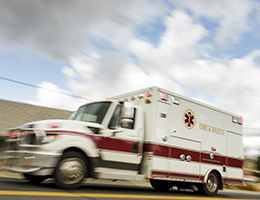
Jan 20, 2019—Driving under the influence of alcohol is a well-known no-no. But operating a vehicle under the influence of drugs can be just as dangerous. Both illicit drugs and misused prescription medications can cause problems. Here's what you need to know.
The lowdown on drugged driving
Researchers are still studying how drugs affect driving. But the numbers are telling.
The National Survey on Drug Use and Health looks at driving habits of people 16 and older. The 2013–2014 survey found that almost one in four drivers tested positive for at least one drug that could impact their driving.
The 2016 survey found that in the previous year:
- 20.7 million people drove under the influence of alcohol.
- 11.8 million drove under the influence of illicit drugs.
- Men were more likely than women to drive under the influence.
- Young people age 18 to 25 were more likely to get behind the wheel after using drugs or drinking.
And young people are especially at risk. They're newer drivers and more likely to underestimate dangerous situations. Combine this lack of experience with drug use and things can go very wrong. According to the National Institute on Drug Abuse (NIDA), car crashes are the leading cause of death among people age 16 to 19.
Wrecks and criminal charges
It's hard to measure how many crashes are caused by drugged driving. There's no good roadside drug test yet. Plus, police don't usually test for drugs if a driver already has a high blood alcohol level. And if a driver has both drugs and alcohol in their system, it's hard to know which substance had the biggest influence.
In 2016, among people killed in car accidents, more than 40 percent of drivers who were drug tested had positive results. And 50 percent of those drivers were positive for two or more drugs.
States have unique laws. Some have zero tolerance for drugged driving. That means drivers can face charges for any amount of drugs in a driver's blood or urine. Other states are waiting for more research to define blood levels.
Different drugs, different problems
Not all substances affect the brain the same way. So they impact driving differently. Marijuana can slow reaction time, decrease coordination, and impair judgment of time and distance. On the other hand, methamphetamine and cocaine can cause reckless and aggressive behavior.
Opioids can cause drowsiness and impair memory and thinking. Sedatives like benzodiazepines and barbiturates can cause dizziness and drowsiness. None of these are going to improve your skills behind the wheel.
How to prevent drugged driving
You can make smart choices and help your loved ones too. NIDA offers these tips:
- Talk to your friends about the risks of drugged driving.
- Offer to be a designated driver.
- Avoid gatherings where alcohol and drugs are present.
- Make sure a designated driver takes all car keys.
- Get a ride to and from parties where there are alcohol and/or drugs.